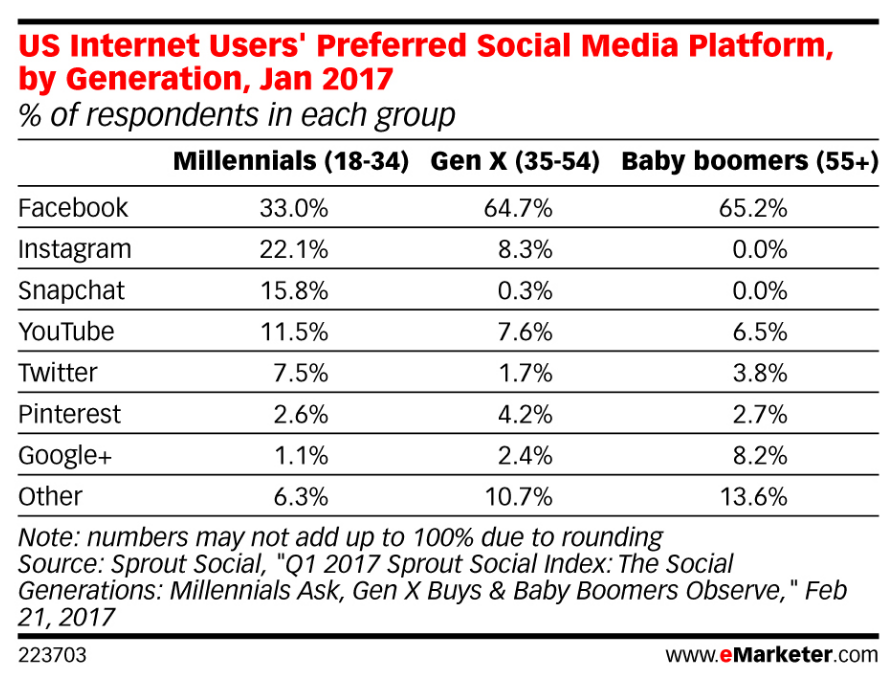Early social networks had life spans like house flies. Friendster enjoyed a brief run of glory before passing the torch to Myspace, which looked set to succeed for years but soon faded away.
Then Facebook came along. It grabbed the throne in the mid-2000s and didn’t let go. Thirteen years after its humble dorm-room beginnings, it has managed to stay relevant and powerful. But with newer social networks abounding, is it still the preferred choice of the public?

According to data from a February 2017 Sprout Social report, Facebook has had no trouble maintaining its grasp on older generations, as an overwhelming majority of Gen X and baby boomers favor the platform. While millennials also prefer it to the competition, a pair of newer networks is gaining ground.
Over 22 percent of millennials are partial to Instagram, and nearly 16 percent chose Snapchat as their preferred network. When you only look at people younger than 25, Facebook’s position appears even more precarious. From January 2011 to January 2014, Facebook lost users in the 13–17 and 18–24 year-old demographics, according to a study from digital consultancy iStrategyLabs. (Facebook owns Instagram, so it’s still doing okay, but it doesn’t want to cannibalize its audience.)
Since Facebook has built up such a large user base, other platforms aren’t going to surpass it in the immediate future. But while eMarketer claims Facebook will see a 2 to 3 percent annual boost in total users the rest of this decade, Instagram expects to see at least a 10 percent increase in 2017 alone. Eventually, the usage gap will close.
“Social networks live and die on their ability to attract new users and to keep those users engaged,” writes Adweek contributor Kimberlee Morrison. Instagram and Snapchat have provided something fresh and original that resonates with younger audiences. If Facebook wants to maintain its dominance for generations to come, it will need to find new methods of keeping consumers entertained.
Image by
Jan-Stefan Knick & EyeEm / Getty